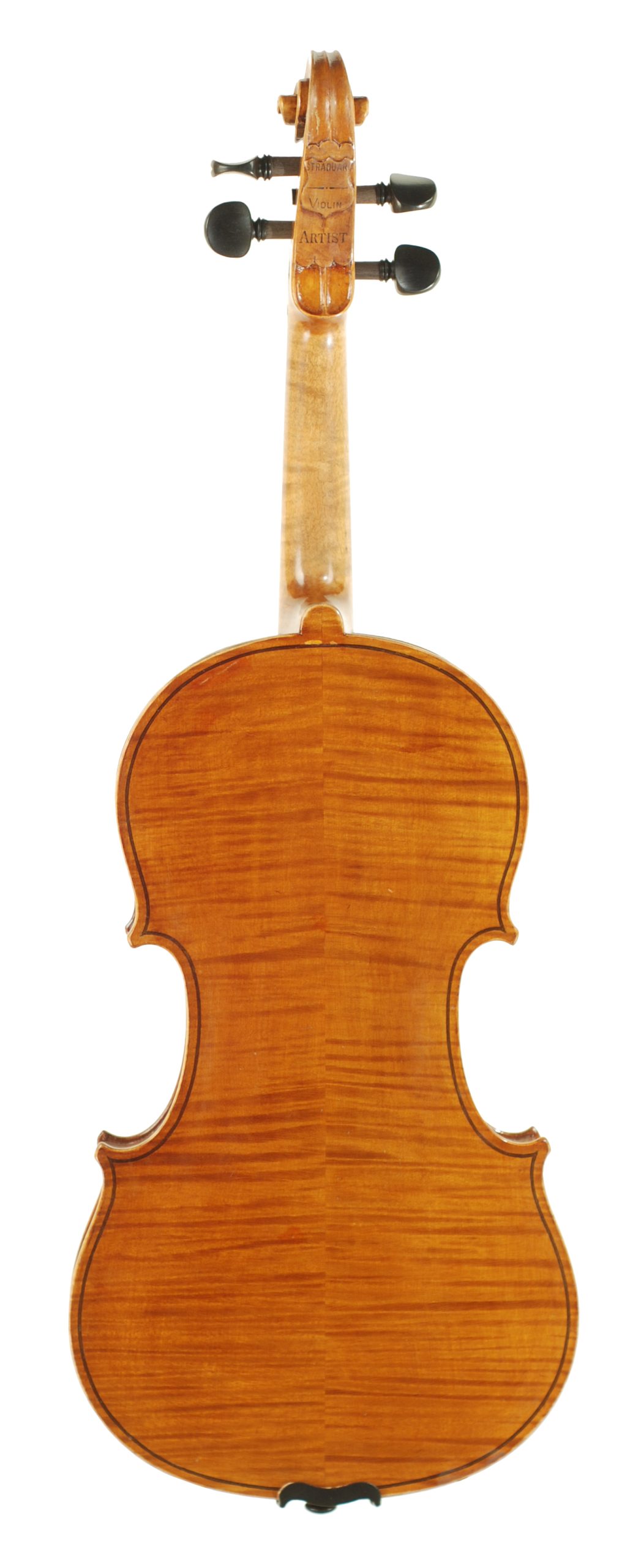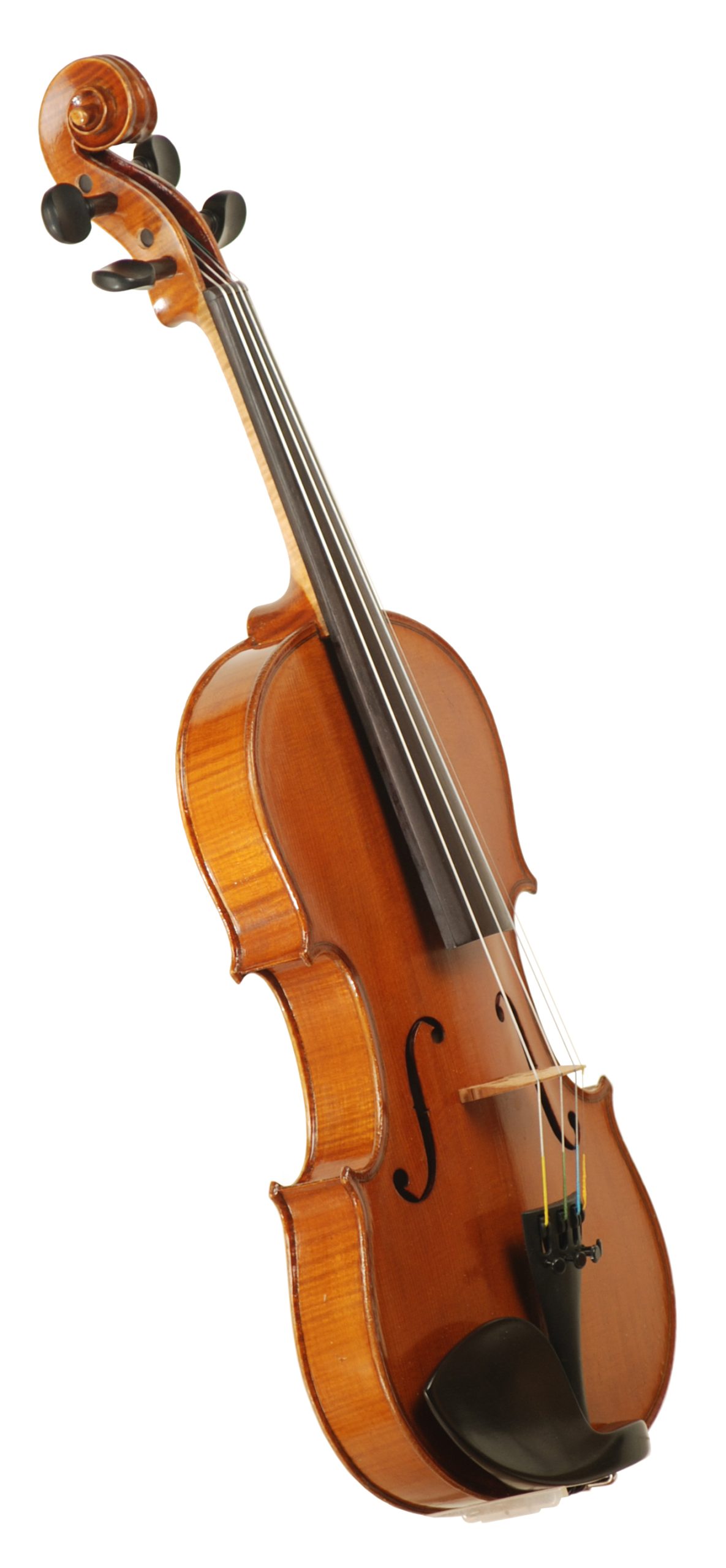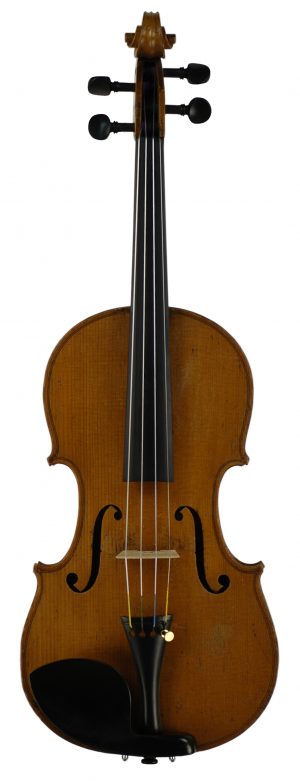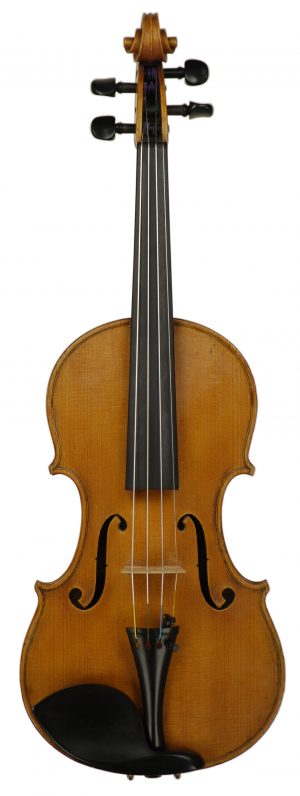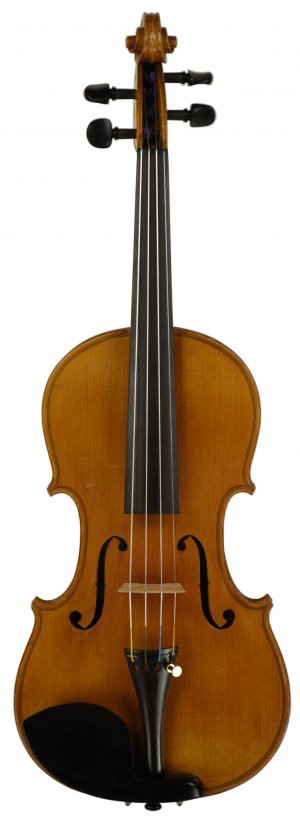Wilhelm Duerer Exceptional Trade Violin – Eisleben, Germany 1907
$3,000.00
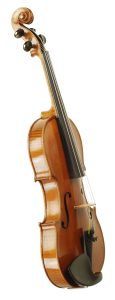

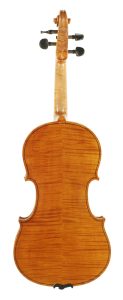
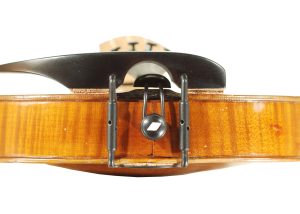
click picture to enlarge
Wilhelm Duerer violins were made for E. T. Root & Sons Violins and Wm Lewis and Son, both of Chicago, in the late 1800’s up into 1920. The Duerer name was a trade name and not really the name of the maker. This gem of a German violin was imported at the turn of the century. It was made Eisleben, located east of Leipzig, which has a rich history and was the home of Martin Luther. It is a beautiful trade violin with very nice workmanship and a surprising amount of power and drive in the sound.
We have meticulously gone over the entire violin, even bushing all 8 peg holes in the peg box and gave the instrument a new set of ebony pegs. We also cambered the fingerboard, cut a new bridge and soundpost, replaced the tailpiece and chinrest, and saved the original end button that has a mother-of-pearl diamond shape inlaid into the ebony. The back plate is highly flamed and descends slightly from the center seam and is of medium-width flame. The ribs, neck, and scroll match in the degree of the flame. The tonewood is choice, exceptional for a trade violin. The spruce top shows straight tight grain. Great to see for a trade instrument. Our violin is in very good condition, with some light wear and natural patina to the varnish. It is oil varnish with an amber golden/brown color with a hint of orange. The base of the varnish is a golden yellow color. The violin is gorgeous, and the woods are a Wow! That is why we decided to go the extra mile and bush the peg holes and spruce up the instrument.
Corpus 358.0 mm., Major Width 211.0 mm., Minor Width 169.0 mm., Rib Height 29.0-30.0 mm.
The tone is full, and the power can be controlled. The rich sounding G and D strings are amazing. I found the instrument responded well to a bow with more weight: 61.4 – 62.5 overall gram weight. I used my favorite bows from our showroom to test out the violins. The instrument will be great for orchestral playing as well as fiddling tunes. The E and A strings sing and have a powerful, brighter side to the tone. The treble side also responds well and had great strength in first through third position and well in higher positions too. The response was instant and with not a lot of heavy bow work. The violin is well worth a look for the intermediate player.


